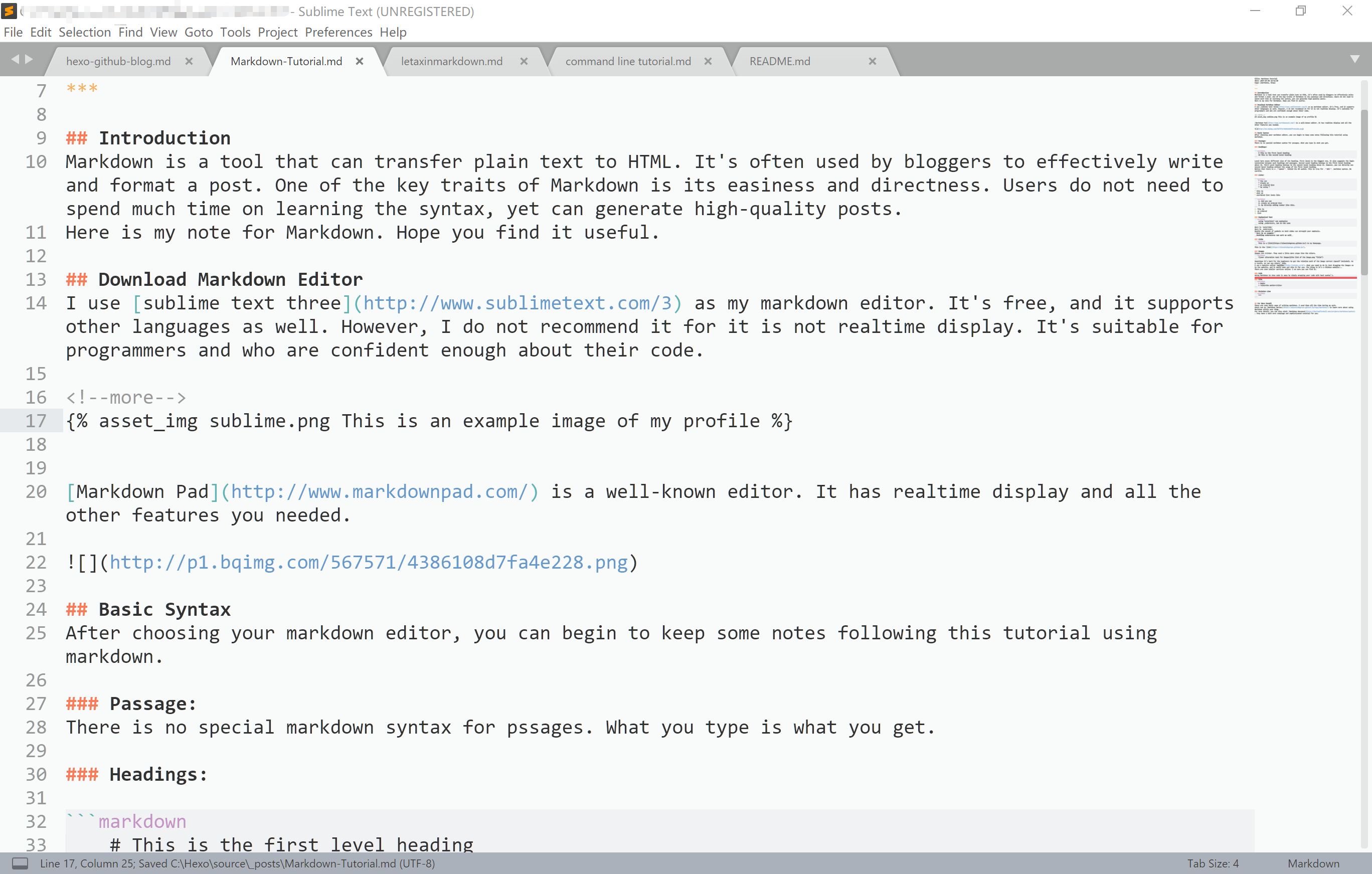Introduction
Markdown is a tool that can transfer plain text to HTML. It’s often used by bloggers to effectively write and format a post. One of the key traits of Markdown is its easiness and directness. Users do not need to spend much time on learning the syntax, yet can generate high-quality posts.
Here is my note for Markdown. Hope you find it useful.
Download Markdown Editor
I use sublime text three as my markdown editor. It’s free, and it supports other languages as well. It’s suitable for programmers who are confident enough about their code and are willing to install some plugins.

Basic Syntax
After choosing your markdown editor, you can try to keep some notes following through this tutorial using markdown.
Passage:
There is no special markdown syntax for pssages. What you type is what you get.
Headings:
|
|
Level here means different size of the heading. First level is the biggest one. It also suggests the logical connection between each headings and passages. Second Level Heading belongs to the first level heading above it. Third Level heading belongs to the second level heading above it. However, you can directly use second level heading without using the first level heading.
Notice that there is a space behind the ## symbol. This is true for all markdown syntax. Be careful.
Lists:
|
|
- this is
- what an
- unordered list looks like
|
|
- This is
- an ordered
- list
Emphasized Text
|
|
Here is asterisks
Here is underscore
Double the amount of symbols on both sides can strength your emphasis.
Here is an example
Doubling underscores can work as well
Links
|
|
This is the link.
Images
Images are tricker. They need a litte more steps than the others.
Code
Using Markdown to show code is easy by simply wrapping your code with three back quotes(`).
Cite
|
|
Division Line
|
|
For More Detail
These are some basic ways of writing markdown. I used them all the time during my work.
Check out my Markdown Series to learn more about using Markdown within your Blog.
For more detail, you can also visit Markdown Document. They have a much more complege and sophisticated tutorial for you.